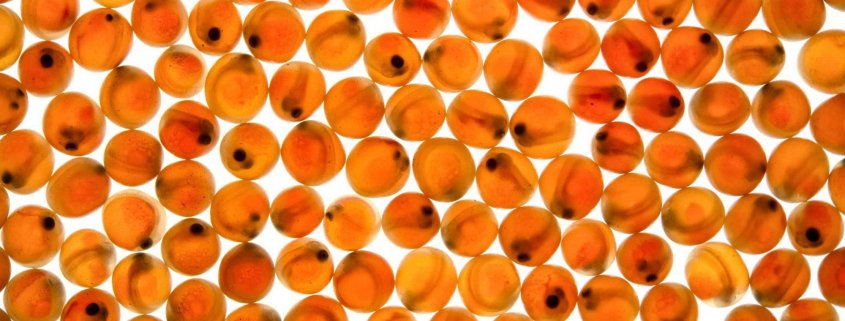
The EPIC4 genomic project and the Strategic Salmon Health Initiative, two major projects that have received support from PSF throughout the Salish Sea Marine Survival Project, have generated interesting results that can potentially inform improved hatchery operations.
The work done under SSMSP as part of the Strategic Salmon Health Initiative has provided the tools to assess the health and condition of fish, including their 1) infectious health – including infectious agents carried, presence of a viral disease state, activation of different branches of immunity related to infection, 2) state of smolt readiness, and 3) presence of stress — which can be further partitioned into thermal, osmotic and hypoxia-driven stress versus general stress. Furthermore, biomarkers predictive of imminent mortality (fish that will likely die within 48 hours) and state of inflammation, also often predictive of poor survival, have been developed. Together, these biomarker tools and assays have been developed for application on non-destructive gill tissue in a tool called the salmon Fit-Chip. Application of the infectious agent monitoring tool (which when run alone can assess presence and abundance of up to 47 agents at once) and Fit-Chip tools by hatcheries could help to:
- optimise hatchery practices to minimize stress on the fish
- precisely identify when fish are smolt ready, and refine strategies to control the timing of the smolt window
- identify and mitigate exposure to infective agents
- develop means to optimize the health and condition of fish upon release, thereby increasing their chances of post-release survival
- track variances in health and condition of fish of different release groups, information that could inform which conditions are most closely linked with poor early marine survival
Meanwhile the EPIC4 program has effected parental based tagging (PBT) of hatchery Coho stocks in Southern BC to allow for genotyping of the majority of hatchery Coho smolts released into the Salish Sea. This work enables subsequent identification of clipped juveniles and adults by stock and year of origin, release strategy, and parentage history, as well as detailed investigations of differences in early marine distribution patterns of different hatchery Coho stocks. Furthermore, genetic based sampling of returning adults will allow for identification of genetic, physiological and environmental factors that affect family-specific survival rates of hatchery Coho salmon, which may support provide a means to allow reduced hatchery Coho production while sustaining or improving adult production.
Parental-based tagging is non-lethal and separates salmon into families to better study their genetics and to identify the year in which they were produced (i.e. age). PBT allows for studies of:
- the contribution of Coho Salmon from hatcheries to the fisheries in southern BC;
- survival rates from post-fishery to spawning in different families of hatchery Coho Salmon; this can be important in estimates of effective population size;
- and genetic, physiological, phenotypic and environmental factors (e.g., water temperature) affecting fitness of hatchery Coho Salmon.
These tools can support a meaningful evaluation of hatchery programs with an objective to increase salmon production.
Objective
The goal of this component of our Hatchery Effectiveness Program was to complete a comprehensive review of the current scientific methods that could be applied to improve effectiveness of hatchery production. This includes an assessment of:
- Genetics—faster, cheaper, higher throughput and more sensitive genetic stock identification could be used for field programs to assess wild stocks interacting with hatchery fish. Parentage-based-tagging allows genetic determination of the age of hatchery fish, population of origin, and genotypes.
- Genomics—could be used to minimize the impacts of domestication and broodstock selection and to optimize adaptive potential of stocks (e.g. thermal tolerance).
- Transcriptomics—which allows us to understand plastic responses to environmental change and could be used in enhancement to understand responses to environmental stress, disease and domestication.
- Microfluidics qPCR—which are high throughput molecular assessments of infection, disease, and stress. Salmon Fit Chips can be used to track smolt readiness and optimize husbandry to produce fish with the highest fitness.
- Environmental (e)DNA—novel methodology with expanding applications in ecosystem science and stock assessment.
Goals
Goals and products for this project include the following:
- A report on new tools and science that could be used by SEP for optimizing hatchery production titled “Genetics and ‘omics’ Technologies Review for Salmon Hatcheries”.
- A manual for hatchery staff, outlining utility of and practical steps for applying new genomic and genetic technologies to increase hatchery effectiveness.
- An in-person presentation of the manual to hatchery staff to provide an overview of the material and address any questions about the material and how it can be applied to their programs. The presentation will be prepared based on the final structure/draft of the manual.
